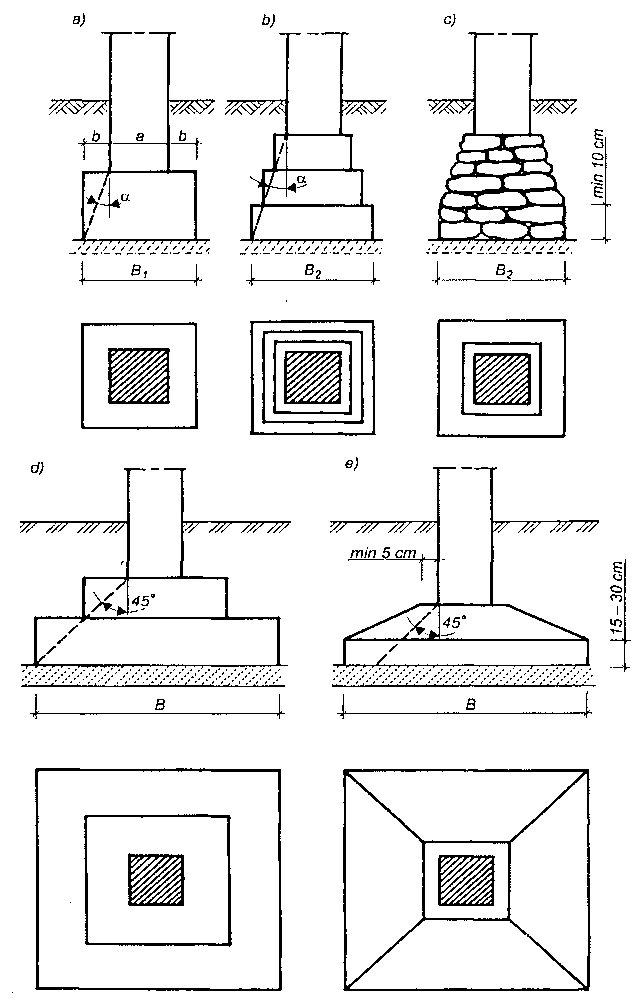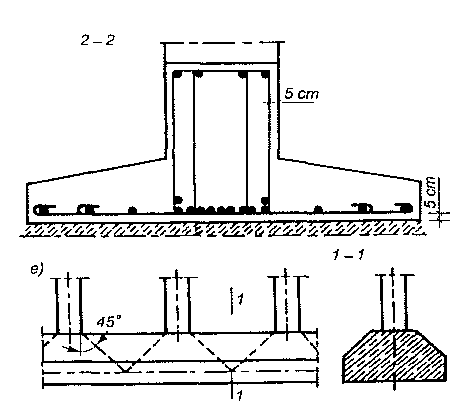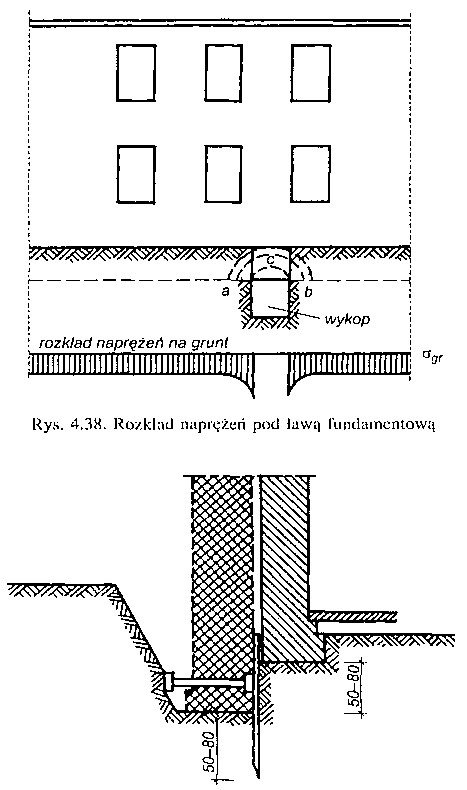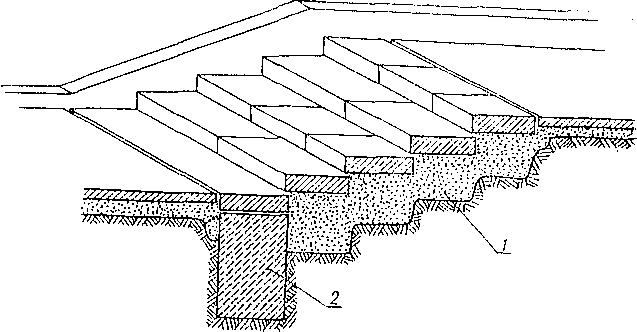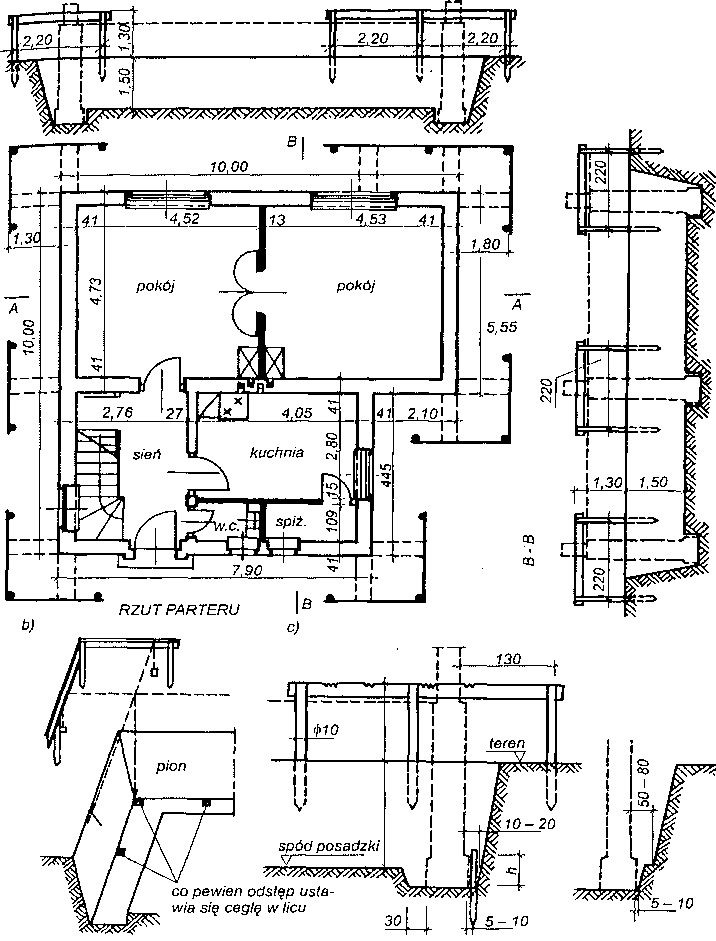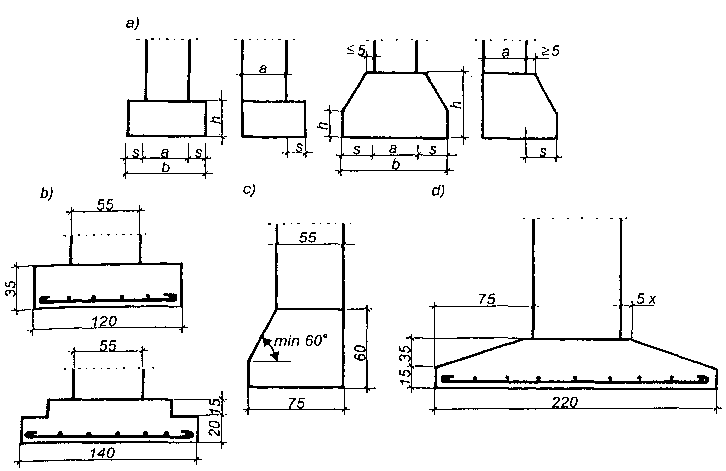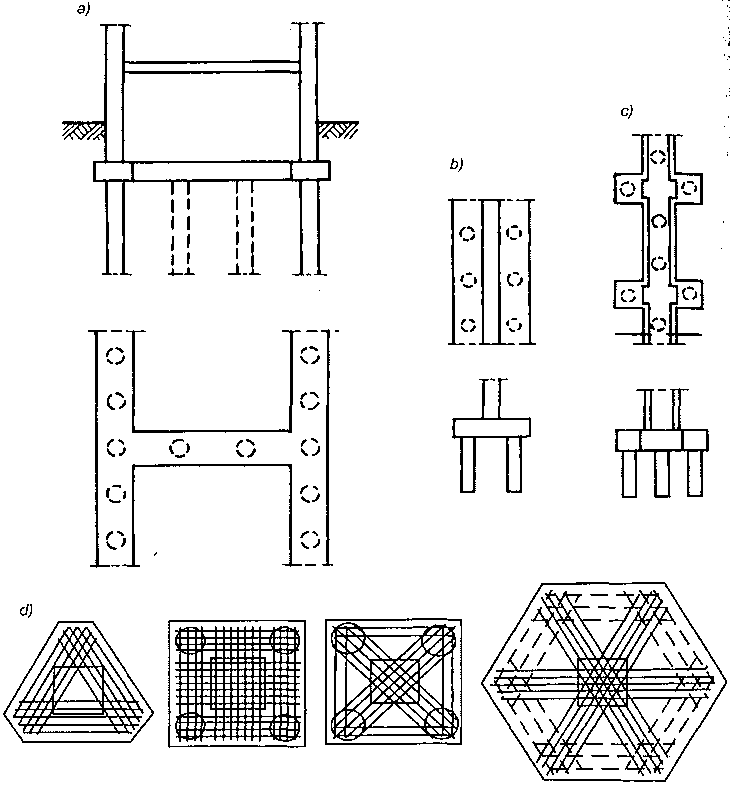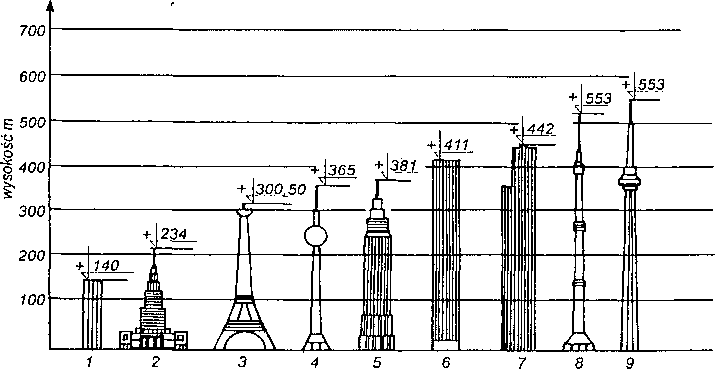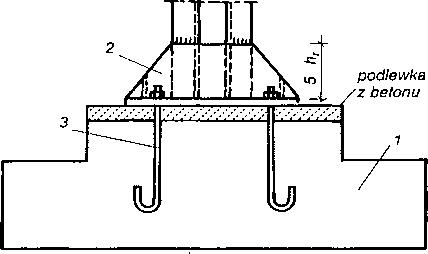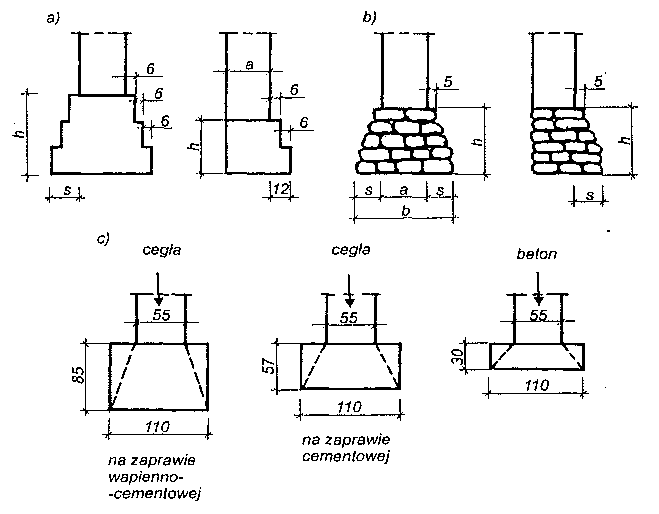 Ławy fundamentowe: a) ceglane, b) kamienne, c) wysokości ław ceglanych i kamiennych wykonanych na zaprawach wapienno-cementowej lub cementowej oraz ław z betonu.
Ławy fundamentowe: a) ceglane, b) kamienne, c) wysokości ław ceglanych i kamiennych wykonanych na zaprawach wapienno-cementowej lub cementowej oraz ław z betonu.
Najprostszym rodzajem fundamentów płytkich są stopy i ławy. Stopy stosowane są do przeniesienia obciążeń od słupów. Ławy mogą być stosowane do przeniesienia obciążeń od ścian, jak również i od słupów, jeśli słupy znajdują się blisko jeden drugiego.
Na rysunku przedstawiono rodzaje ław fundamentowych. Ławy ceglane i z kamienia wykonuje się o zmiennej szerokości u góry i u dołu. Poszerzenia ław otrzymuje się przez stosowanie odsadzek o wielkości 1/4 cegły. Ławy mogą być wykonane z odsadzkami jednostronnymi lub dwustronnymi. Ławy niesymetryczne (z jednostronnymi odsadzkami) są stosowane wzdłuż istniejących budynków lub przy granicy sąsiada.
Pochylenie ław zależy od rodzaju użytej zaprawy; przy zaprawie wapiennej h:s ≥ 4, przy zaprawie wapienno-cementowej h : s ≥ 3, a przy zaprawie cementowej h:s ≥ 2. W związku z tym ulega zmianie wysokość ławy.
W ławach niesymetrycznych nie stosuje się poszerzenia jednostronnego s większego od połowy muru piwnicznego, ponieważ przy zbyt dużym poszerzeniu skrajna część ławy nie bierze udziału w przekazywaniu obciążeń na grunt. Pod wpływem momentu M = Ne ulega obrotowi i prawa cześć ławy jest odrywana od gruntu.
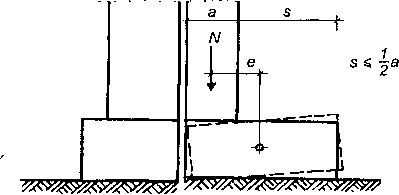 Ława z jednostronną odsadzką (np. przy budynku sąsiada).
Ława z jednostronną odsadzką (np. przy budynku sąsiada).
